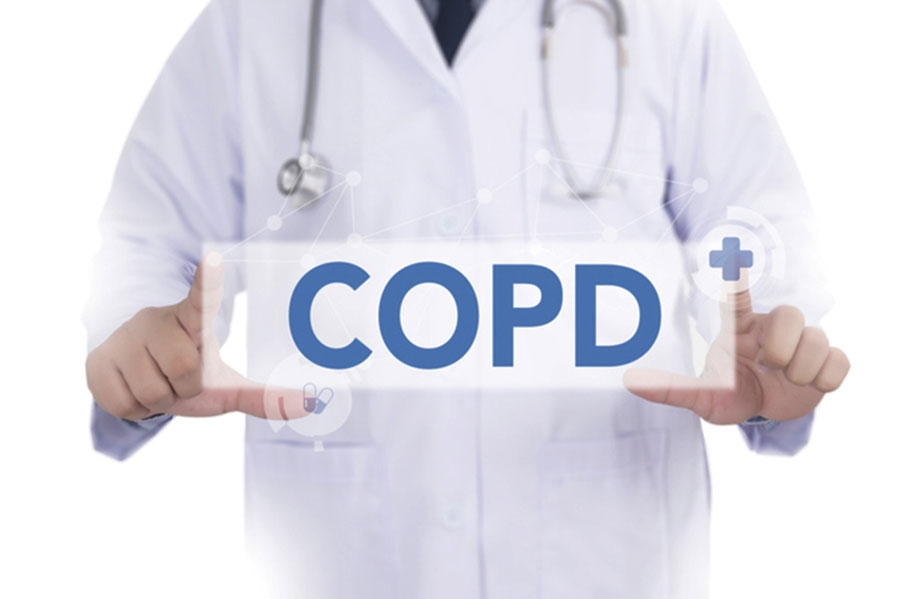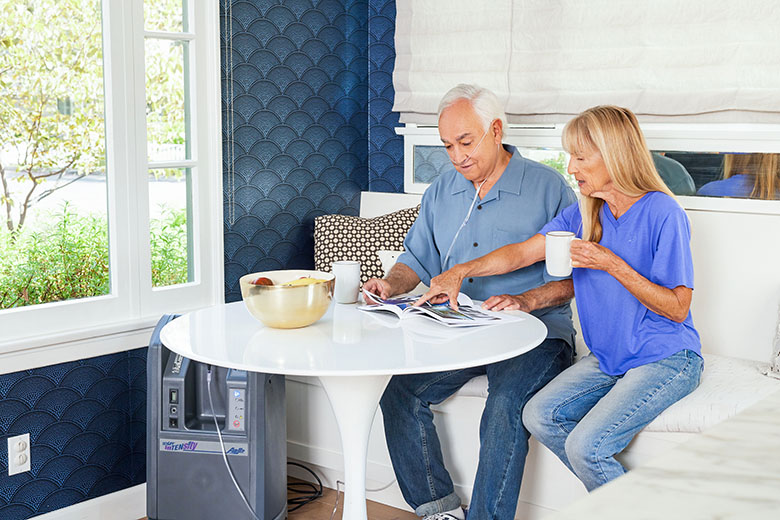Chronic obstructive pulmonary disease (COPD) is a respiratory condition that makes it difficult to breathe, affecting over 16 million Americans according to the CDC. Understand what this disease entails, who it affects and why, and what it is like living with COPD.
What is COPD?
COPD is a condition that damages the airways in your lungs and limits your ability to move air through them. The most common COPD symptoms include coughing, wheezing, chest tightness, difficulty breathing, and mucus in your chest. Two conditions that typically lead to COPD are emphysema and chronic bronchitis, often occurring together.
Emphysema damages the air sacs of your lungs, causing them to lose elasticity. This reduces the ability of your lungs to expand when you breathe. Chronic bronchitis inflames the lungs' linings, causing them to swell and produce mucus that fills your airways.
If you have been frequently exposed to irritants such as smoke, chemical fumes, and air pollution, you are at a higher risk for developing COPD. The most likely culprit that causes COPD is smoking — it accounts for nearly 90 percent of all COPD cases.
Living with COPD
Unfortunately, there is no cure for COPD. It is a progressive disease, and minimizing its impact on your body requires consistent treatment to help slow symptoms and prevent further complications. Because the disease is typically caused by repeatedly exposing your lungs to irritants over a long period, getting it under control also usually requires dramatic lifestyle changes.
Smoking is the most common cause of COPD. If you smoke, quitting is essential if you want to get your symptoms under control. And if you work in a job or live in an area that exposes your lungs to high pollution levels or chemical irritants, consider a change in your environment.
How to manage COPD
- Exercise: Integrating fitness into your routine is one of the best, most natural ways to improve your lung capacity and slow the onset of COPD.
- Oxygen therapy: Using supplemental oxygen from an oxygen tank or concentrator can be highly beneficial if your practitioner determines your blood oxygen levels are too low.
- Avoiding lung infections: Illnesses such as the flu that impact your respiratory system can exacerbate symptoms of COPD and other chronic respiratory conditions such as emphysema, bronchitis, asthma, and pulmonary hypertension. Getting a flu shot and vaccinations for threats such as Covid-19, can reduce the likelihood of getting sick.
- Surgery: In more severe instances, your practitioner may recommend you have an operation to remove damaged tissue in the lungs. In a worst-case scenario, a lung transplant might be necessary.
How oxygen therapy can help
Oxygen therapy is not just about treating COPD. When you give your body the oxygen it needs, it can help you become healthier and more productive. Here are some of the added benefits of oxygen therapy:
- You can breathe easier. When you follow your treatment plan, it can reduce feelings of breathlessness throughout the day.
- You'll be more active. Whether it is exercising or just getting out of the house to run errands, oxygen therapy can help you return to doing the things you enjoy.
- Your energy level will increase. Fatigue is a common symptom of COPD and low oxygen levels. Giving your body more oxygen helps it to circulate throughout your body and increases your energy levels.
- You'll sleep better. Breathing difficulties caused by COPD can make it harder for you to get a restful night's sleep. Your practitioner may also recommend sleep therapy or supplemental oxygen during the night, depending on your condition.
Receiving a COPD diagnosis is a life-changing event that may require you to rely more heavily on supplemental oxygen. The good news is that there are ways to alleviate your symptoms over time and even return to some sense of normalcy . With a variety of devices available that you can use at home or in a medical facility, you and your practitioner can develop a treatment plan that works for you. The effects of COPD can be discouraging, but you have the power to take control, find a solution, and regain your health-related quality of life.



